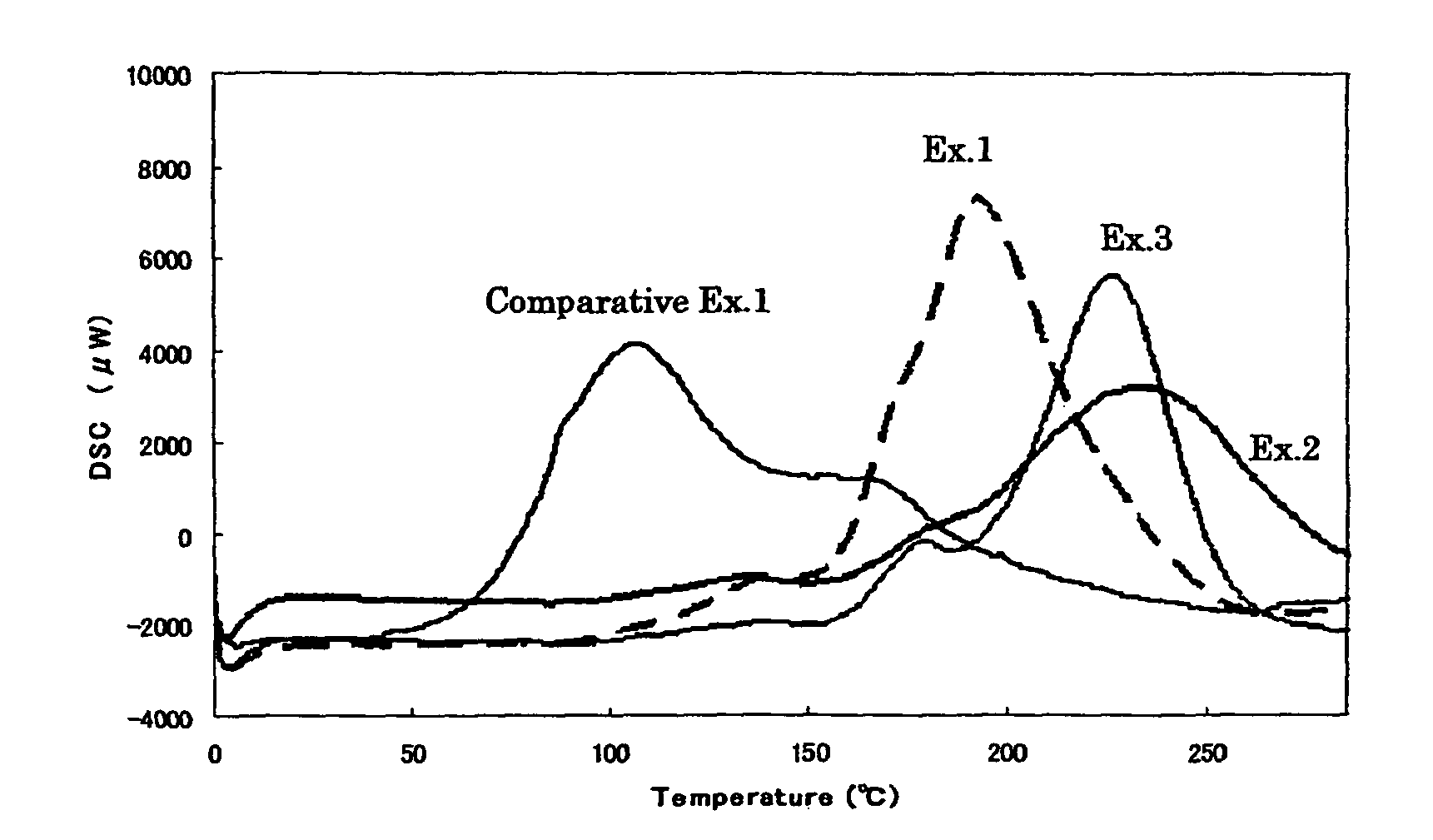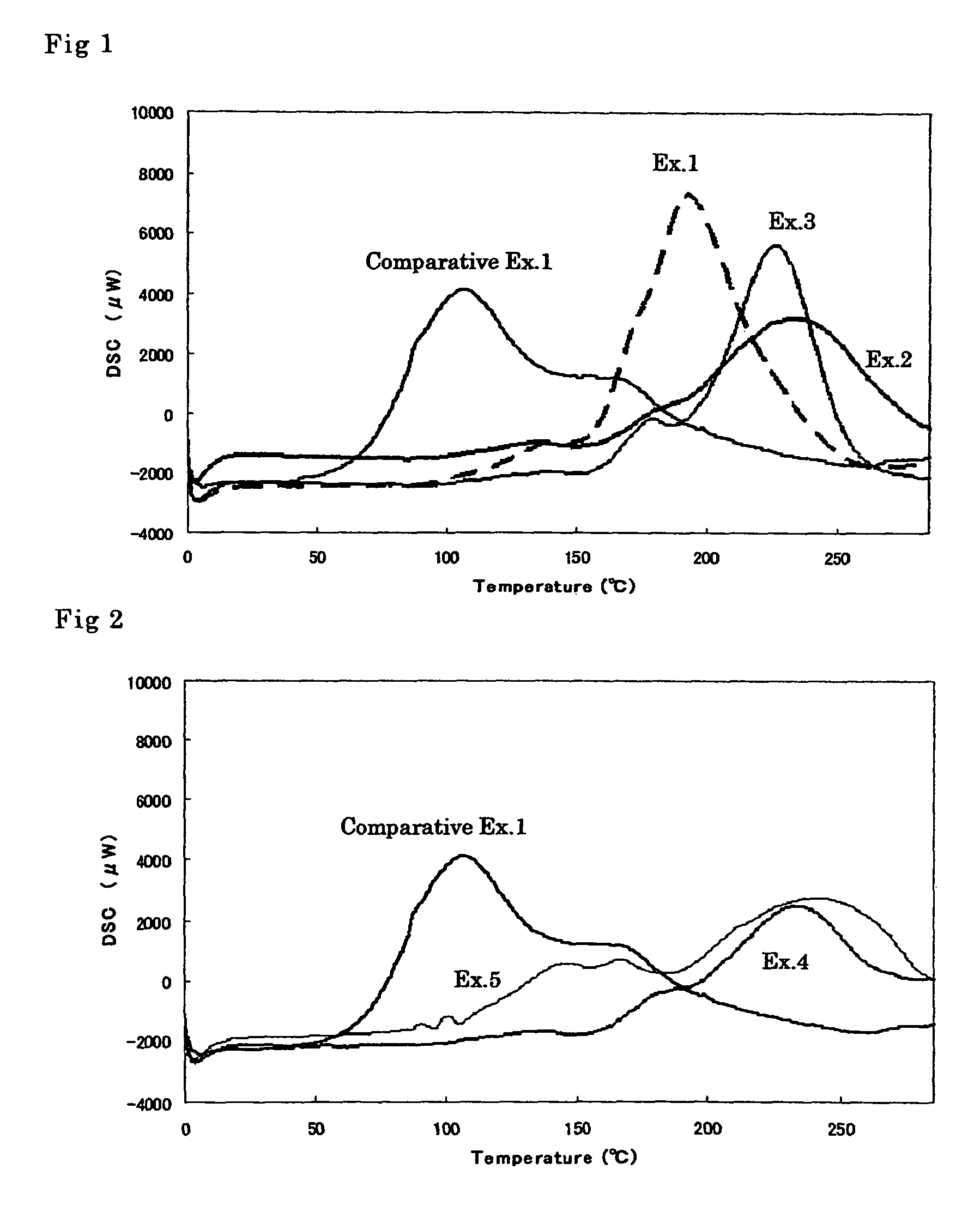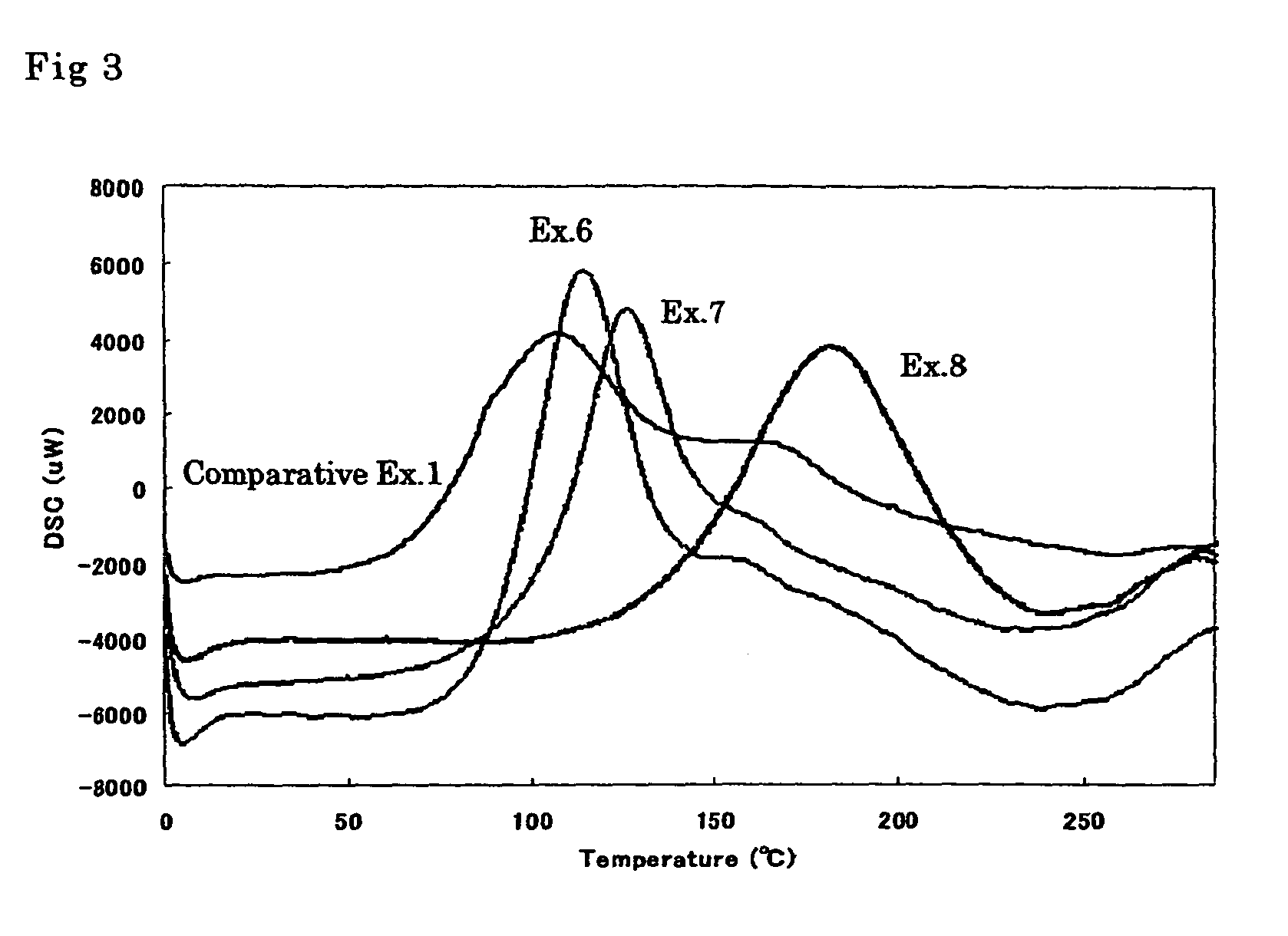Cationically polymerizable composition and method for controlling cationic polymerization
a composition and cationic polymerization technology, applied in the field of cationic polymerization composition and method, can solve the problems of poor stability as a composition, unsuitable practical use of antimony, difficult use of heteropolyacids in practice, etc., and achieve the effect of improving storage stability
- Summary
- Abstract
- Description
- Claims
- Application Information
AI Technical Summary
Benefits of technology
Problems solved by technology
Method used
Image
Examples
example 1
[0051]A solution of 0.02 part by weight of silicotungstic acid in 0.38 part by weight of propylene carbonate and 0.002 part by weight of p-hydroxyphenyldimethylsulfonium sulfate were added to 100 parts by weight of OXBP and the mixture was stirred to give a cationically polymerizable composition. The result of DSC measurement is shown in FIG. 1.
example 2
[0052]A solution of 0.02 part by weight of silicotungstic acid in 0.38 part by weight of propylene carbonate and 0.002 part by weight of 1,3-diethyl-2-thiourea were added to 100 parts by weight of OXBP and the mixture was stirred to give a cationically polymerizable composition. The result of DSC measurement is shown in FIG. 1.
example 3
[0053]A solution of 0.02 part by weight of silicotungstic acid in 0.38 part by weight of propylene carbonate and 0.002 part by weight of 1,3-diphenylguanidine were added to 100 parts by weight of OXBP and the mixture was stirred to give a cationically polymerizable composition. The result of DSC measurement is shown in FIG. 1.
PUM
| Property | Measurement | Unit |
|---|---|---|
| temperature | aaaaa | aaaaa |
| temperature | aaaaa | aaaaa |
| melting point | aaaaa | aaaaa |
Abstract
Description
Claims
Application Information
 Login to View More
Login to View More - R&D
- Intellectual Property
- Life Sciences
- Materials
- Tech Scout
- Unparalleled Data Quality
- Higher Quality Content
- 60% Fewer Hallucinations
Browse by: Latest US Patents, China's latest patents, Technical Efficacy Thesaurus, Application Domain, Technology Topic, Popular Technical Reports.
© 2025 PatSnap. All rights reserved.Legal|Privacy policy|Modern Slavery Act Transparency Statement|Sitemap|About US| Contact US: help@patsnap.com



